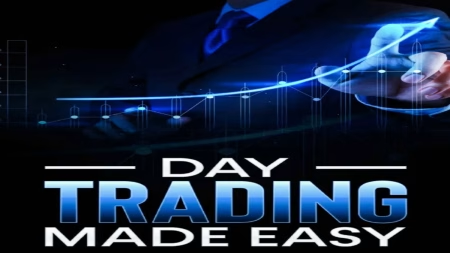Forex trading, short for foreign exchange trading, is the global marketplace for buying and selling currencies. With a daily trading volume exceeding $6 trillion, the forex market is the largest and most liquid financial market in the world. From professional investors to casual traders, forex trading offers opportunities to profit from fluctuations in currency values. Whether you’re completely new or looking to polish your skills, this guide will break down everything you need to know about forex trading.
What is Forex Trading?
Forex trading involves exchanging one currency for another with the goal of making a profit. Currencies are traded in pairs (like EUR/USD or GBP/JPY), meaning you’re speculating on the price movement between the two.
For example, if you believe the euro will strengthen against the U.S. dollar, you would buy the EUR/USD pair. If the euro does rise as expected, you can sell it later for a profit.
How Does the Forex Market Work?
Unlike traditional stock exchanges, the forex market operates 24 hours a day, five days a week. It is decentralized, meaning it doesn’t have a physical location or central exchange. Trades are conducted over-the-counter (OTC) via a global network of banks, brokers, and financial institutions.
The forex market is divided into three main sessions:
- Asian session (Tokyo)
- European session (London)
- North American session (New York)
Because of time zone differences, trading is almost always available, offering continuous opportunities around the clock.
Why is Forex Trading Popular?
- Liquidity: The immense volume of daily transactions ensures high liquidity, which means you can enter and exit trades easily.
- Low Entry Costs: You can start trading with as little as $100.
- Leverage: Forex brokers often offer leverage, allowing traders to control large positions with a small initial investment.
- Accessibility: With an internet connection and a trading account, you can access the market from anywhere in the world.
Commonly Traded Currency Pairs
Forex pairs are categorized into three groups:
- Major pairs: EUR/USD, GBP/USD, USD/JPY, USD/CHF
- Minor pairs: EUR/GBP, AUD/CAD, NZD/JPY
- Exotic pairs: USD/TRY, EUR/ZAR, GBP/SGD
Major pairs are the most traded and typically offer lower spreads and higher liquidity.
Basic Concepts Every Forex Trader Should Know
- Pip (Percentage in Point): The smallest price movement in a currency pair. For most pairs, one pip is 0.0001.
- Spread: The difference between the buy (ask) and sell (bid) price.
- Leverage: Enables you to control a large trade with a small capital. For example, 1:100 leverage lets you control $10,000 with $100.
- Margin: The amount of money needed to open a leveraged trade.
- Lot Size: Standard lot (100,000 units), mini lot (10,000 units), and micro lot (1,000 units).
How to Start Forex Trading
1. Choose a Reliable Forex Broker
Look for a broker that is regulated by financial authorities like the FCA (UK), ASIC (Australia), or NFA (USA). Consider their platform features, spreads, and customer support.
2. Open a Trading Account
Most brokers offer demo accounts to practice trading without risking real money. Once confident, open a live account.
3. Use a Trading Platform
MetaTrader 4 (MT4) and MetaTrader 5 (MT5) are popular platforms known for their user-friendly interface and powerful charting tools.
4. Develop a Trading Strategy
Use technical analysis, fundamental analysis, or a combination of both. Some popular strategies include:
- Scalping: Short-term trades that last minutes.
- Day Trading: Positions opened and closed within the same day.
- Swing Trading: Holding positions for several days to capture larger price movements.
- Position Trading: Long-term trading based on macroeconomic trends.
Risk Management in Forex Trading
Risk management is key to long-term success in forex. Here are a few essential tips:
- Set Stop-Loss Orders: Automatically close trades to limit losses.
- Use Proper Position Sizing: Never risk more than 1-2% of your trading capital on a single trade.
- Avoid Overleveraging: While leverage can boost profits, it can also amplify losses.
- Diversify: Avoid putting all your capital into one currency pair.
The Role of Economic Indicators
Forex prices are heavily influenced by economic events and indicators such as:
- Interest rates (Federal Reserve, ECB decisions)
- Inflation reports (Consumer Price Index)
- Employment data (Non-Farm Payrolls in the U.S.)
- GDP growth rates
Staying updated with the economic calendar is crucial for anticipating market movements.
Final Thoughts
Forex trading is a dynamic and rewarding endeavor, but it requires discipline, research, and a solid strategy. Beginners should start with demo accounts, invest in forex education, and gradually move into live trading. With patience and proper risk management, forex can be a viable way to diversify your investment portfolio and achieve financial growth.
For more updates, visit https://tradingmarketsignals.com/








